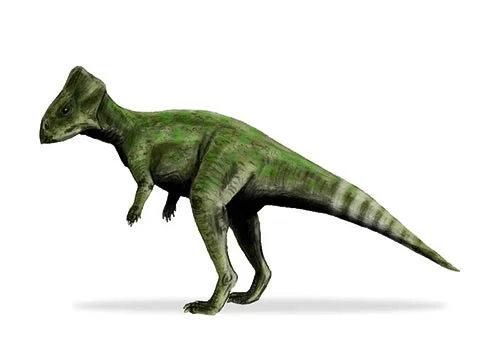Graciliceratops (graceful horned face)

Gras-sil-i-seh-rah-tops
P. C. Sereno - 2000
Herbivore
Estimated 1 meters long
Ceratopsian
G. mongoliensis (type)
Mongolia - Shiregin Gashun Formation
Late Cretaceous, 84-75 million years ago
Graciliceratops Facts
Graciliceratops is a genus of small herbivorous dinosaur that lived during the Late Cretaceous period, approximately 84 to 75 million years ago. Its name means “graceful horned face,” which refers to its slender build and the distinctive horned structure on its skull. Fossils of Graciliceratops have been found in what is now Mongolia.
Graciliceratops was a relatively small dinosaur, measuring only about 1 meter (3.3 feet) in length and weighing around 10 kilograms (22 pounds). It belonged to the family Ceratopsidae, which includes some of the most iconic dinosaurs such as Triceratops, and is the only known ceratopsid from the Late Cretaceous of Mongolia.
The most distinctive feature of Graciliceratops is its skull, which was relatively long and narrow compared to other ceratopsids. It had a single, large horn on its snout, as well as smaller horns over its eyes. The frill on the back of its skull was relatively small, with shallow indentations instead of the deep, elaborate patterns seen in other ceratopsids.
Graciliceratops is believed to have been a fast-moving dinosaur that lived in a semi-arid environment, possibly on the margins of a large desert. Its slender build and relatively small size suggest that it was adapted to a more active lifestyle than many other ceratopsids. While it is not known exactly what Graciliceratops ate, it likely fed on low-growing vegetation and may have been able to browse on shrubs and small trees.
Like many other dinosaurs, Graciliceratops likely faced a number of challenges during its lifetime, including predation by large carnivorous dinosaurs, competition for food and resources, and changing environmental conditions. While it was only a small and relatively short-lived dinosaur, its unique characteristics and adaptations make it an important part of the story of life on Earth during the Late Cretaceous period.



